This is my first stab at a top 100 prospects list for Major League Baseball at ESPN after doing this a few times at FanGraphs. The idea is to combine various advanced metrics, industry sources (mostly scouts and executives) and my own eyeballs to rank players, essentially based on their trade value.
I would normally say "based on how good of a player I think they'll be," but it's always more complicated than that. There are plenty of players at the lowest levels of the minors in whom I have a lot of faith, but the risk created by their not yet facing upper-level competition and their being years behind other prospects in terms of when they'll reach the big leagues can really hurt their value, independent of how good they are.
With that said, a word or two about the process:
• You might read some reports and wonder what you're missing when I describe a player in Triple-A whom I project to be a solid regular but not much more, but teams really value those six to seven years of team control (i.e., before free agency) that a ready-made, everyday player offers. It's a tough balancing act considering these factors, so trade value is the easiest shorthand to sum up that combination.
• There are also plenty of differences among sources on where these prospects should be rated, one skill that will define whether they will succeed, players with big potential variance in outcomes, etc. I try to explain those key factors in the write-up on each player.
• I share tool grades for players to give you an idea of how each of their abilities compares to major league average along with a detailed breakdown for the top 25. "Plus" means 60 on the 20-80 scouting scale, where 50 is MLB average and 60 is one standard deviation above that, 70 is two standard deviations, etc. When I call a player's hit tool a "50/70," that means he has a 50 ability to make contact now, and I project 70 will be his peak.
• I also use something called Future Value, shortened to FV hereafter, as a term that sums up the value of a player into one number. It's also graded on the 20-80 scouting scale. A low-end everyday player is a 50, which correlates to 2.0 WAR; a well above average position player, No. 3 starter or high-end closer is a 60, or somewhere around 3.0 WAR. I refrain from tossing out an 80 on minor leaguers because that would imply one is expected to be one of the top players in baseball. Wander Franco, this year's top prospect, is the best prospect baseball has seen since Mike Trout.
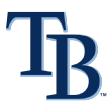
1. Wander Franco, SS, Tampa Bay Rays
Age: 19 (3/1/2001)
Bats: B | Throws: R
5-foot-10 | 190 pounds
Top level: High-A
Tools: Hit 50/70, Game Power 45/60, Raw Power 55/60, Speed 60/60, Fielding 50/55, Throw 65/65
Future value: 70
My challenge with writing about Franco at this time last year was trying to find a part of his game to nitpick so that I could have a negative in the report. Then he went and performed even better in 2019 than he did in 2018. So here we are again. Franco has one of the best contact rates in the minors, which is impressive on its own, but he was the age of a high school senior last year and was playing half of the season in High-A, where the average league age was 22 years old.
This would also be somewhat understandable if Franco had really good bat control but was swinging at almost anything or everything were in the zone because he had no power and pitchers weren't afraid of him. But Franco walked almost twice as much as he struck out, and his slugging percentage was more than 100 points above the league average.
All of this would be less impressive if we were talking about some block of concrete playing first base who really should be DHing. But Franco played 98 games at shortstop across two levels last year, and the best publicly available minor league defensive metric said he was worth plus-9 runs. And he's a plus runner who stole 18 bases ... but he was caught stealing 14 times! There, I finally found the hole in his game.
The Rays told me that it's unlikely that the chance to call Franco up will be a nice, clean opening at shortstop, so they're going to have him play second, third and probably some outfield in 2020 to prepare him so he won't be playing a new position when he gets his first taste of the big leagues. The concept of "big-league-ready" seems too reductive for Franco, but he'll likely play in Double-A and Triple-A in 2020. The Rays are absurdly deep all over the field, and some other prospects are ahead of him in terms of level and age, but when there's a compelling reason to call him up -- probably after the Super Two cutoff in June -- Tampa Bay can't afford to pass up that chance in a year when the team is almost even money to win the AL East.
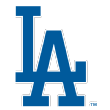
2. Gavin Lux, 2B, Los Angeles Dodgers
Age: 22 (11/23/1997)
Bats: L | Throws: R
6-foot-2 | 190 pounds
Top level: MLB
Tools: Hit 55/65, Game Power 50/65, Raw Power 65/65, Speed 55/50, Fielding 45/50, Throw 45/45
Future value: 65
Lux was a scouts' favorite as a prep middle infielder from Wisconsin, but he was a scouts' favorite, not a slam-dunk top-10 pick because he didn't have separating power, speed or defense. His was a nice package of tools from a cold weather prospect who knew how to play the game. The Dodgers took him 20th overall in 2016, and he sort of disappeared from prospect discourse until a breakout season in 2018, when Lux hit .324 at both High-A and Double-A with 15 combined homers and strong plate discipline as a 20-year-old. That got him into the top 25 or so of prospect rankings, but his 2019 took him to that next level.
Lux now has massive raw power, thanks to one of many Dodgers swing adjustments, mostly to sync the lower half of a hitter's body to let the hands whip through the zone as the legs do the heavy lifting. Lux also has elite pitch selection, which means more walks, fewer strikeouts, finding drivable pitches to swing at at a higher rate than most and having more power to drive those pitches.
This is a winning formula that the Dodgers appear to have perfected, though Lux's defense leaves a bit to be desired. He has had the yips at times but otherwise is completely qualified to play second base. His offense will play anywhere, and the Dodgers have all kinds of interchangeable parts to put Lux in position to succeed in the big leagues in 2020.
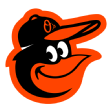
3. Adley Rutschman, C, Baltimore Orioles
Age: 22 (2/6/1998)
Bats: B | Throws: R
6-foot-2 | 216 pounds
Top level: Low-A
Tools: Hit 45/60, Game Power 40/60, Raw Power 60/60, Speed 45/40, Fielding 55/60, Throw 65/65
Future value: 60
Rutschman got regular comparisons to Matt Wieters as an amateur, given that both were top-of-the-draft, switch-hitting catchers with power that projected to stick behind the plate. Wieters' career didn't go as planned, which is instructive because this happens more than we'd like to admit with catchers, but Rutschman is also a better prospect than Wieters was. Orioles fans get another chance to fall in love, and they will when they watch Rutschman. He's big and durable but also really smooth behind the plate with plenty of arm. He's a deceptively good athlete, his plus raw power is effortless in BP, and the quality of his at-bats is also rare. This ranking is aggressive, given that Rutschman has played only 12 games in a full-season league and he's in the risky subset of catching prospects, but he has not failed on a baseball field before, and that's good reason to believe.
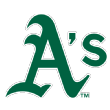
4. Jesus Luzardo, LHP, Oakland Athletics
Age: 22 (9/30/1997)
Bats: L | Throws: L
5-foot-11 | 209 pounds
Top level: MLB
Tools: Fastball 70/70, Slider 70/70, Changeup 50/55, Command 50/55
Future value: 60
Luzardo was a pitchability prep pitcher who had a velo spike, going up to 92-96 mph in his high school senior spring, but then he blew out his elbow and needed Tommy John surgery. The Nationals took him in the third round and gave him an over-slot bonus, then traded him to Oakland in the Sean Doolittle trade. Luzardo's stuff has gotten even better since then and now sits at 94-98 mph velocity to go with a slider that went from 60 to 70 while his command stayed at average to above. With his squat frame, elbow surgery in the past and two spikes in stuff, Luzardo is an unlikely candidate for the title of top pitching prospect in the game, but he's big-league-ready, and he shoves (scout-speak for "pitches aggressively and well"), so what else do you need?
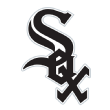
5. Luis Robert, CF, Chicago White Sox
Age: 22 (8/3/1997)
Bats: R | Throws: R
6-foot-3 | 185 pounds
Top level: Triple-A
Tools: Hit 40/50, Game Power 50/60, Raw Power 65/65, Speed 65/65, Fielding 55/60, Throw 60/60
Future value: 60
Robert might have the most enticing tool package in the minor leagues. Some scouts would toss a 60 on his hit tool and arm strength and a 70 on his power, speed and glove. I'm a little more conservative, but those grades are in the acceptable range, which is historic if you're new to the 20-80 scouting scale. Robert has margin for error in his offensive development because he can punish mistakes over the fence and make a difference with his speed in center field and on the basepaths.
The concern is that Robert's pitch selection is weak enough -- described as a 35 on the 20-80 scale -- that it could undermine his offensive tools. Robert is so talented that he wasn't really challenged in Triple-A last year and will need to learn on the job in the big leagues. It wouldn't surprise me if Robert were a roughly 2-WAR player based mostly on speed, defense and punishing mistakes until he can dial in his offensive approach. If he can take the Ronald Acuna Jr. route of struggling for a few months before everything clicks ... well, that kind of long-term outcome is on the table, which is pretty exciting.
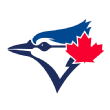
6. Nate Pearson, RHP, Toronto Blue Jays
Age: 23 (8/20/1996)
Bats: R | Throws: R
6-foot-6 | 245 pounds
Top level: Triple-A
Tools: Fastball 80/80, Slider 60/65, Curveball 50/55, Changeup 50/60, Command 45/50
Future value: 60
Pearson had an unusual path to having the biggest fastball of a starting pitching prospect in recent memory: a junior college pitcher who was almost 21 on draft day and was almost completely unknown as a teenager. The carrying tool here is the velocity, and Pearson has all you want, averaging 97 mph and peaking at anywhere from 101 to 103 mph, depending on your source. This type of velocity has led to arm problems for most pitchers before him, but Pearson's injuries have been of the freak variety, such as a broken bone when he was hit by a comebacker. He has the frame to support durability, along with a surprising amount of feel for pitching, given his top-of-the-scale power.
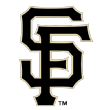
7. Joey Bart, C, San Francisco Giants
Age: 23 (12/15/1996)
Bats: R | Throws: R
6-foot-3 | 235 pounds
Top level: Double-A
Tools: Hit 35/45, Game Power 50/60, Raw Power 65/65, Speed 35/35, Fielding 60/65, Throw 60/60
Future value: 60
Bart was in the top tier of Class of 2015 high school players who opted to go to college, and he emerged as a likely first-rounder late in his sophomore year before another big jump in his draft year in 2018. Bart is a rare plus defender behind the plate who is also tall. The raw physical tools are loud, with at least plus raw power and arm strength, and Bart has an advanced feel for the game behind the plate. It's striking when you notice how easily catching comes to him, as he slows down the game in all facets. Not to mention, he has gotten raves from pitchers and scouts alike for his mind and preparation. Bart's main weakness is that he has a little bit of a free-swinger tendency at times and a power-focused approach that can limit the contact he makes, but check the offensive numbers of the catching position, and you'll stop worrying.
 8. MacKenzie Gore, LHP, San Diego Padres
8. MacKenzie Gore, LHP, San Diego Padres
Age: 21 (2/24/1999)
Bats: L | Throws: L
6-foot-3 | 195 pounds
Top level: Double-A
Tools: Fastball 55/60, Slider 55/60, Curveball 50/55, Changeup 50/55, Command 50/60
Future value: 60
Gore is a consensus top-10 prospect in the game and, in many ways, is exactly how scouts would draw up a pitching prospect. He's an elite athlete who was a real draft prospect as a hitter, he has a near ideal frame and delivery, and those things add up to elite command in addition to advanced feel for pitching. Gore has big extension, which means he gets down the mound, which creates a flatter plane to the plate, which helps a fastball that is located up in the zone. This is most effectively done when command and viable secondary pitches are present -- and Gore has both.
He has a four-pitch mix, and all four grade out above-average or plus, but that's where we get into the minuses. Primarily, Gore doesn't have a 70-grade pitch, and his spin rates on both breaking balls are pretty low. Gore fits what scouts are traditionally looking for, but his teammate Luis Patino, with bonkers stuff that darts all over the place, is more what teams are looking for these days, given the choice. Gore has a longer track record and the pedigree of being a top pick, but he has a smaller margin for error to reach his No. 2-starter upside than some other pitchers ranked in this area.
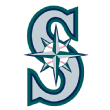
9. Julio Rodriguez, OF, Seattle Mariners
Age: 19 (12/29/00)
Bats: R | Throws: R
6-foot-3 | 205 pounds
Top level: High-A
Tools: Hit 35/45, Game Power 50/70, Raw Power 80/80, Speed 55/50, Fielding 45/50, Throw 45/45
Future value: 60
It might surprise many of you to see Rodriguez ahead of Adell, a roughly similar player who is two levels behind Adell. It's totally reasonable to have them ranked in the opposite order, but the people I spoke with were more convinced that Rodriguez would figure out the contact issues that he and Adell both face, and Rodriguez's strengths -- namely power -- are close enough to Adell's. Rodriguez has a precocious feel for the game and is one of few tooled-up teenagers who gets universal praise for his makeup. He also has more bat control than Adell, and though his top-end exit velos aren't quite as high, Rodriguez is almost 2 years younger, and you don't have to hit the ball 115 mph to get it out of the yard. How often a player hits the ball more than 95 mph and how often he hits it that hard with launch angles between 15 and 35 degrees is more important than peak exit velocity, and Rodriguez seems like a slightly better bet in those regards.
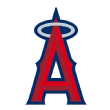
10. Jo Adell, LF, Los Angeles Angels
Age: 20 (4/8/1999)
Bats: R | Throws: R
6-foot-3 | 215 pounds
Top level: Triple-A
Tools: Hit 35/45, Game Power 50/70, Raw Power 80/80, Speed 55/50, Fielding 45/50, Throw 45/45
Future value: 60
Adell has changed a bit from his high school days, when he was throwing into the mid-90s from the mound and at least a 60 runner. He has added a good bit of bulk to increase his power and reduce his foot speed, and his arm strength has slowly regressed for unclear reasons, though it doesn't affect his value much. Sources told me that Adell hit a ball 115 mph and said his raw power would have to be an 80, given how often he does stuff such as that. Adell is still a freak athlete; check out his box jumps on Instagram if you're curious about how explosive he is.
The concern with Adell is his contact rate. He has frequently had strikeout spikes at each new level before settling in and has been tinkering with swing mechanics in the past year or so. Some advanced metrics that execs have quoted to me suggest that, without any adjustment, Adell would have such big holes in his swing in the big leagues that he couldn't survive. Obviously, he'll make adjustments, as he has in the past. He is on the verge of the big leagues at 20, when many scouts wondered when he was 18 whether he'd ever get to his raw power in games. There will always be some swing-and-miss and limited defensive value to go with the bombs, so the question is how many bombs and how much contact on the non-bomb at-bats.

11. Luis Patiño, RHP, San Diego Padres
Age: 20 (10/26/99)
Bats: R | Throws: R
6-foot-0 | 150 pounds
Top level: Double-A
Tools: Fastball 80/80, Slider 60/65, Curveball 50/55, Changeup 50/60, Command 45/50
Future value: 60
Patino is electric and exciting, even in an organization that has Fernando Tatis Jr. and Chris Paddack, one of the most electric young duos in the game. What's different is that Patino does a thing we've all seen before -- delivering big stuff from a smallish frame -- but he does it better than anyone in recent memory. Patino stands just 6 feet but delivers a mid-90s fastball that peaks at 99 mph with shockingly good command due in large part to his athleticism, and he produces lots of whiffs due to their four-seam/cutting shape. His slider is easily a plus pitch, and his changeup is now flashing plus pretty often.
One team staffer casually mentioned last year that Patino had the best stuff in the minors by their metric that grades TrackMan data on the 20-80 scouting scale. A couple other teams told me they had the same answer or something very close to it. You could ask if Patino's frame can handle 200 innings per season, but not many pitchers can do that these days. Patino is exciting and elite and was the best pitching prospect in baseball for one source I spoke with. He might be everyone's choice by the end of the year.

12. Jarred Kelenic, RF, Seattle Mariners
Age: 20 (7/16/1999)
Bats: L | Throws: L
6-foot-1 | 196 pounds
Top level: Double-A
Tools: Hit 45/60, Game Power 45/55, Raw Power 60/60, Speed 55/50, Fielding 45/50, Throw 60/60
Future value: 60
Kelenic was drafted sixth overall from a Wisconsin high school, in large part because of his standout summer showcase performances, as the spring season doesn't feature top-end competition. He was drafted by the Mets and traded to Seattle in the Robinson Cano/Edwin Diaz deal in what seemed like a bad decision at the time and seems a good bit worse now.
Kelenic has slowly lost a step and likely fits better long-term in right field, but he can play a serviceable center. That's the only real question here, as he is a standout hitter with plus raw power that he's already getting to in games.
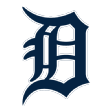
13. Matt Manning, RHP, Detroit Tigers
Age: 22 (1/28/98)
Bats: R | Throws: R
6-foot-6 | 190 pounds
Top level: Double-A
Tools: Fastball 60/65, Curveball 60/60, Changeup 50/55, Command 45/55
Future value: 60
For me, Manning is the top pitcher in the Tigers' system, but you're totally justified in choosing him or Casey Mize. Mize offers plus "now" stuff and command with a less-than-ideal package, and Manning offers a near-ideal package with plus stuff and merely very good command. I didn't love Manning the first time I saw him because his delivery was pretty ugly, but by the end of that showcase outing, you could still see the characteristics: a long, lean, uber-athletic frame with easy arm speed and the feel to spin a breaking ball.
All of these elements came together for the first time in 2019, with command and a newly above-average changeup being the last elements to show up. Both Manning and Mize should spend a lot of time in Triple-A in 2020. With strong, healthy seasons, they should get big league looks late in the year to give Tigers fans a taste of their future on the mound.

14. Casey Mize, RHP, Detroit Tigers
Age: 22 (5/1/97)
Bats: R | Throws: R
6-foot-3 | 208 pounds
Top level: Double-A
Tools: Fastball 55/55, Slider 60/60, Cutter 60/65, Splitter 60/65, Command 55/60
Future value: 60
Mize was a solid follow in high school who took a step forward in his sophomore year at Auburn, when his regular velocity jumped into the mid-90s. He took another jump in his draft year when he perfected his splitter and cutter, and his command also improved. Mize has one of the best combinations of a deep repertoire of raw stuff and command of those pitches.
The reason he's this low is because of how he does it. He isn't overly athletic, and he has a history of somewhat minor arm trouble dating to high school. Worry around his shoulder scared teams away from signing him out of high school, his elbow was sore enough to shelve him as a sophomore, he got a PRP injection after pitching that summer, and he went on the shelf because of shoulder soreness again in 2019. I'm trying to project what Mize's production will be in his six or seven years while starting when he makes it to the big leagues, and there's enough reason to be concerned here to slide him down a bit, even if it's due to something as wonky as trying to predict a pitcher's health.

15. Royce Lewis, CF, Minnesota Twins
Age: 20 (6/5/99)
Bats: R | Throws: R
6-foot-2 | 200 pounds
Top level: Double-A
Tools: Hit 30/50, Game Power 35/55, Raw Power 60/65, Speed 60/50, Fielding 45/50, Throw 50/50
Future value: 60
Lewis was a universally beloved prospect on the summer showcase circuit who became a little tougher to peg with an up-and-down draft spring at a powerhouse SoCal high school. The Twins cut an under-slot deal to take him first overall in 2017, and he performed better than expected at the lower levels of the minors. He was playing shortstop and getting Derek Jeter comparisons, both for his overall tools and for the way some questioned his ability to play shortstop. Things were a bit rockier in High-A and Double-A in 2019, as Lewis was trying to make offensive adjustments, which he appeared to continue to improve upon in the Arizona Fall League.
His hitting mechanics still need a little work in terms of timing and quieting his hand movement, but scouts rave about his makeup, and the raw power and speed are still elite. I'm betting on Lewis figuring things out and becoming an above-average everyday player with some chance to become a star, possibly in the infield.

16. Michael Kopech, RHP, Chicago White Sox
Age: 23 (4/30/96)
Bats: R | Throws: R
6-foot-3 | 195 pounds
Top level: IL (MLB in 2018)
Tools: Fastball 70/70, Slider 55/60, Changeup 45/50, Command 40/50
Future value: 60
Kopech was one of the most recent examples of why teams keep betting on athletic pitching with nasty stuff but subpar command. He had finally broken through, turned the corner and reached the big leagues with the best version of his stuff and legitimate starter command, but he blew out his elbow after four big league starts and missed all of 2019.
He's back now, and his velocity and raw stuff appear to be back to normal (sitting mid-90s with his fastball, touching 101 mph), though it's standard for command and breaking ball consistency to take a little while to come all the way back after Tommy John surgery. This might be a year for him to learn on the job between Triple-A and the big leagues before a true big league breakout in 2021.
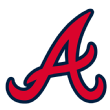
17. Cristian Pache, CF, Atlanta Braves
Age: 21 (11/19/98)
Bats: R | Throws: R
6-foot-2 | 185 pounds
Top level: Triple-A
Tools: Hit 40/50, Game Power 35/45, Raw Power 55/55, Speed 65/65, Fielding 70/70, Throw 70/70
Future value: 60
I've always joked that if Pache had been born in America, he would be a wide receiver at LSU. Pache was an 80 runner a few years ago, but his pure speed has regressed a bit as his raw power and bulk have increased. That said, his elite defensive instincts are still present, so you can see why fans want to say Pache will be Andruw Jones; the defensive skill set is pretty similar.
Offensively, scouts have been waiting for the Pache breakout for years. He has made more incremental progress to the point that he is probably still a solid everyday player with no future improvements, but he could be a perennial All-Star if he hits his above-average offensive ceiling.

18. Marco Luciano, SS, San Francisco Giants
Age: 18 (10/9/01)
Bats: R | Throws: R
6-foot-2 | 180 pounds
Top level: Short-season A-ball
Tools: Hit 30/55, Game Power 35/70, Raw Power 65/70, Speed 50/45, Fielding 40/45, Throw 55/55
Future value: 60
Luciano is arguably the most exciting player in the minor leagues, with explosive bat speed and raw power at age 18, and he added to surprisingly strong contact ability. He's one of those rare players who can create the explosion necessary for impact power, and Luciano does it without much effort and with a near-ideal bat path and pretty good pitch selection.
He's a leading candidate to have a huge full-season debut in 2020 and shoot up this list. He's another guy who was at or near the top of his international signing class, and he has proven the hype to be legitimate with his early success in pro ball. Luciano's hands are fine, and his arm will play anywhere, but his lateral quickness is limited. We've seen lots of elite players find a way to stick at shortstop with this skill set in the past, but I'd guess Luciano ends up at third base or right field long-term.

19. Dustin May, RHP, Los Angeles Dodgers
Age: 22 (9/6/97)
Bats: R | Throws: R
6-foot-6 | 180 pounds
Top level: MLB
Tools: Fastball 55/60, Slider 60/60, Changeup 45/50, Command 50/55
Future value: 60
May is most notable for being a gangly 6-foot-6 with a bushy shock of red hair, but he's also a really good pitcher. He sits in the mid-90s with his fastball and generates a good number of grounders thanks to its sink, though the Dodgers normally get their pitchers to throw four-seam fastballs, suited better for being thrown up in the zone. May's slider is a plus reliable out pitch, and he's athletic enough to have above-average command, so he's likely to end up as a mid-rotation starter. However, the Dodgers' pitching depth might mean he spends a month or so in Triple-A before picking up where he left off in 2019.

20. A.J. Puk, LHP, Oakland Athletics
Age: 24 (4/25/95)
Bats: L | Throws: L
6-foot-4 | 230 pounds
Top level: MLB
Tools: Fastball 65/65, Slider 60/60, Curveball 50/50, Changeup 50/60, Command 45/50
Future value: 60
Puk was a projection lefty at an Iowa high school whose velocity never popped above 87-91 mph in his draft year. That happened for him as a freshman at Florida, when he ran his fastball up to 97 mph. He had a strong, three-year college career. Toward the end, Puk's body got thicker in a bad way, he was suspended from the team for being caught climbing a construction crane on campus, his command backed up, and the crispness and quality of his stuff declined.
He went from being a strong candidate to go first overall to being chosen sixth overall by Oakland. Somewhat unexpectedly, Puk fixed all of these issues soon after signing, showing the maturity to remake his body, regain his old velocity and then some, and develop a plus changeup. He missed the 2018 season because of Tommy John surgery when he seemed likely to reach the big leagues and came back late in 2019, showing his old form and getting a cup of coffee. He's right back where he was two years ago, ready to contribute as a potential front-line arm.

21. Spencer Howard, RHP, Philadelphia Phillies
Age: 23 (7/28/96)
Bats: R | Throws: R
6-foot-3 | 205 pounds
Top level: Double-A
Tools: Fastball 55/60, Slider, 50/55, Curveball 50/55, Changeup 55/60, Command 45/50
Future value: 60
Howard is another player on this list who has come from relative obscurity as an amateur. He entered his draft spring at Cal Poly with little track record as a reliever, then parlayed a very strong year into being a second-round pick. In pro ball, his velocity slowly increased, so when he hit 100 mph late in 2018, scouts weren't really watching him, as it was after the trade deadline. That meant 2019 was his first full breakout year (despite some arm soreness), and he flashed three plus pitches at times, with starter command. He's now on the short list of arms to come up when Philly needs rotation help in 2020.
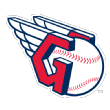
22. Nolan Jones, 3B, Cleveland Indians
Age: 21 (5/7/98)
Bats: L | Throws: R
6-foot-4 | 220 pounds
Top level: Double-A
Tools: Hit 40/50, Game Power 40/65, Raw Power 65/65, Speed 40/40, Fielding 45/50, Throw 65/65
Future value: 55
Jones has taken a couple of turns in his development. At the summer showcases in high school, he had a Corey Seager starter kit as a rangy, projectable shortstop. Then he added a ton of bulk that spring, and some people were projecting him as a future first baseman with the projected raw power from the summer before already present. Jones has worked to undo some of that in pro ball and has settled in as a big but solid third baseman who has plus raw power.
The thing no one could see coming is that when I asked analysts whom their proprietary pitch selection or plate discipline metrics had as the top prospect, Jones kept coming up, often with an 80-grade ability in this area. That means Jones has elite ability to pick the right pitches to swing at, and he'll also draw a lot of walks, probably with a good bit of strikeouts because he'll be trying to do damage late in the count. Accounts differ as to whether Jones will be a .240 or .270 hitter while drawing walks and hitting home runs, and some think he still might move to first base in a few years, but his tools will play anywhere.

23. CJ Abrams, CF, San Diego Padres
Age: 19 (10/3/00)
Bats: L | Throws: R
6-foot-2 | 182 pounds
Top level: Low-A
Tools: Hit 30/60, Game Power 20/50, Raw Power 55/60, Speed 80/70, Fielding 40/50, Throw 50/50
Future value: 55
Abrams was tough to pin down as the 2019 draft approached. He was flagged by scouts as an elite prospect as a sophomore in high school in the Atlanta suburbs and was a 70-grade runner before he could legally drive. He has looked to me like Kenny Lofton since the first time I saw him, due to the skill set, his hoops background and his mannerisms in the batter's box. Some clubs were turned off by his low-key demeanor -- teams tend to want a vocal leader with a top pick -- but most admit that no team can have more than a few of those on a team. Scouts told me after the draft that the way Abrams quietly cares about the game and improving told them what they needed to know, more than what kind of handshake he gave or how focused he looked.
Abrams had a historic debut after signing and seems likely to end up in center field, where his 80-grade speed can be unleashed. Abrams increased his raw power at least one grade from the summer to the spring in high school by adding muscle, and there's a belief that he'll end up doing that again in the next few years. The main questions here are both where he will end up defensively and if he can improve his pitch selection in the next few years.
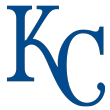
24. Bobby Witt Jr., SS, Kansas City Royals
Age: 19 (6/14/00)
Bats: R | Throws: R
6-foot-1 | 185 pounds
Top level: Rookie
Tools: Hit 20/45, Game Power 30/60, Raw Power 60/65, Speed 60/60, Fielding 50/55, Throw 60/60
Future value: 55
Witt Jr. is the son of Bobby Witt, the longtime pitcher, and was identified as early as his freshman year in high school as an elite prospect. He was competing against kids 2 or 3 years older than him and not just holding his own but also standing out in showcases throughout high school. He was one of the first underclassmen to put up confirmed triple-digit exit velocities when many teams hadn't seen that before. He seemed destined to go to the Royals last year, when they were tied to him long before they picked him second overall.
The comparison that everyone seems to put on Witt is Trevor Story: fringy contact rates, big raw power that he gets to in games, strong athlete with a great glove at shortstop. Given that Witt has played only in rookie ball and didn't perform that well on the surface (his exit velos are still excellent for his age), some teams are skeptical, but a big 2020 season in low-A could put him in the top five of next year's list.
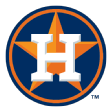
25. Forrest Whitley, RHP, Houston Astros
Age: 22 (9/15/97)
Bats: R | Throws: R
6-foot-7 | 225 pounds
Top level: Triple-A
Tools: Fastball 60/60, Slider 55/55, Curveball 60/60, Changeup 55/60, Command 40/50
Future value: 55
Whitley went from overweight prep prospect in the summer before the draft to underrated mid-first-round pick to top pitching prospect in baseball when he put it all together, and now he's a super-talented pitcher with a number of issues that have come up in the past year or so. There was a stimulant suspension, then there were somewhat minor lat, oblique and shoulder issues, and now, at the beginning of camp, the word from multiple teams is that he looks notably overweight again -- just like the summer before his draft year.
I like to bet on talent, and Whitley has lots of it. There also isn't a ton of evidence that he has a poor work ethic or is a bad kid -- tons of elite players have had these sorts of issues at one point -- but he's now 22 years old, hasn't reached the big leagues yet and hasn't really performed well in more than a year. He's in the wait-and-see bucket, and hopefully he stays out of the "cautionary tale" bucket.
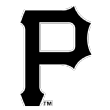
26. Ke'Bryan Hayes, 3B, Pittsburgh Pirates
Age: 23 (1/28/97)
Bats: R | Throws: R
6-foot-1 | 210 pounds
Top level: Triple-A
Future value: 55
Ke'Bryan is the son of former big leaguer Charlie Hayes. Ke'Bryan's feel for the game stands out, but he's most notable for his unusual collection of tools. He has plus speed, a plus arm and a potential 70 glove, all while playing third base, when those tools almost always end up playing shortstop or center field. He has plus contact skills and average raw power but hasn't been able to get to his power in any real way in games yet. Given the makeup, scouts think this will happen reasonably soon and, as with Cristian Pache and a couple of others on this list, all of the non-offensive skills here mean any sort of improvement with the bat will make Hayes a star.

27. Brandon Marsh, CF, Los Angeles Angels
Age: 22 (12/18/97)
Bats: L | Throws: R
6-foot-2 | 200 pounds
Top level: Double-A
Future value: 55
Marsh sustained an elbow injury at the beginning of camp, but that shouldn't change his long-term outlook as an impact player to play alongside Mike Trout. Marsh was a late-rising prep player at draft time because of his playing football rather than travel baseball. He's a big athlete who is a plus runner and fits in center field with a plus arm. At the plate, he has plus raw power and above-average contact skills that he came close to putting together in an ideal way with some adjustments in 2019. He's similar to another Georgia prep product, Braves CF Drew Waters, but pitch selection is the main difference in Marsh's favor.

28. Dylan Carlson, LF, St. Louis Cardinals
Age: 21 (10/23/98)
Bats: B | Throws: L
6-foot-3 | 195 pounds
Top level: Triple-A
Future value: 55
Carlson was a late-rising projection prep prospect whom clubs have differing opinions on, but the Cardinals were leading that charge and took him 33rd overall in 2016. He was young for his draft class, turning 18 in October after the draft (a strong indicator of future success). Carlson performed well but somewhat quietly until his 2019 breakout at Double-A and Triple-A as a 20-year-old. He doesn't have the massive raw power you like to see in a corner-outfield spot, but he gets to all of that 55-grade raw power and has above-average contact skills. Carlson is also deceptively quick with solid instincts in the outfield, so he can fill in as a center fielder when needed, but his pure arm strength (40) and speed (50) don't stand out in a showcase environment.

29. Oneil Cruz, RF/SS, Pittsburgh Pirates
Age: 21 (10/4/98)
Bats: L | Throws: R
6-foot-7 | 175 pounds
Top level: Double-A
Future value: 55
When I asked a scout what he thought Cruz looked like in 2019, he said "an octopus: He's all arms and legs at shortstop and catches everything." I saw Cruz in a showcase when he was 15, and he was about 6-foot-1. He's now 21 years old and 6-7 and is still playing shortstop. Another scout said he looked like a "left-handed[-hitting] Aaron Judge playing shortstop." This is some wild stuff that has certainly never happened before, but that is also why I'm listing him as a future right fielder.
Cruz is an above-average runner once he gets going, but he'll continue to fill out, and there's a reason there hasn't been a non-first-baseman infielder this big. Cruz will have (and maybe already has) grade-70 or -80 power and arm strength. The worry is that his pitch selection and limb length will create big problems with making contact and getting to that power in games. He didn't have any problem with that in 2019 while performing well younger than his competition in High-A and Double-A.
Cruz is fun and exciting and good for baseball, and he hasn't failed yet, so I'm betting he figures it out, but I have no idea where this is going to end up.

30. Brendan McKay, LHP, Tampa Bay Rays
Age: 24 (12/18/95)
Bats: L | Throws: L
6-foot-2 | 212 pounds
Top level: MLB
Future value: 55
McKay is one of the players on this list whom casual fans probably know, as he contributed down the stretch on a playoff contender and is notable for his two-way ability, like Shohei Ohtani. McKay was seen by the Rays and a number of other teams at draft time as a better position-player prospect -- a potential 60 hit/power first baseman who hadn't fully focused on hitting in his career -- who was also a late-first-round pitcher. After a couple of pro seasons of doing both, McKay's feel for the game came out more on the mound, and his bag of 55-grade pitches and 60-grade command make him a strong bet to be a mid-rotation starter. The Rays might be the worst team for McKay to be on and hope to contribute as a part-time DH or first baseman, so he's probably now a pinch hitter when he isn't pitching.
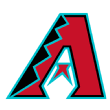
31. Kristian Robinson, CF, Arizona Diamondbacks
Age: 19 (12/11/00)
Bats: R | Throws: R
6-foot-3 | 210 pounds
Top level: Low-A
Future value: 55
One scout's body comp for Robinson was Falcons receiver Julio Jones; another gave The Predator. He might have the best body in the minors (it's weirdly normal for scouts to speak like this about young men), and he has the tools to match: He's a plus runner with a plus arm and plus raw power that profiles in center field. He might continue to bulk up and slide over to right field as he matures, but that would probably mean 70 raw power. He's another player on this list likely to settle in with around a 50 hit tool in an effort to get to all of his raw power in games. For a Bahamian-born prospect with limited high-level reps, he has performed better in pro ball than expected.

32. Andrew Vaughn, 1B, Chicago White Sox
Age: 21 (4/398)
Bats: R | Throws: R
5-foot-11 | 210 pounds
Top level: High-A
Future value: 55
Vaughn was one of the most decorated college hitters in recent memory, with three years of demolishing Pac-12 pitching after he wasn't much of a prospect in high school. A stout 6 feet tall, Vaughn doesn't necessarily look the part, but he has fantastic feel for hitting and the strength for easy plus raw power. Basically every scout hangs at least a 60 on the hit tool, raw power and game power, but you could go as high as 70 on all three of them. Vaughn offers little in terms of speed, defense, throwing arm or positional value, so he needs to mash, but he's almost as safe a bet as there is on this list, and he should get there by early 2021 if not 2020.

33. Luis Campusano, C, San Diego Padres
Age: 21 (9/29/98)
Bats: R | Throws: R
6-foot-0 | 195 pounds
Top level: High-A
Future value: 55
To be blunt, Campusano was overweight on the summer showcase circuit as a high school player. In his draft spring less than a year later, he was dramatically leaned out. He remade his body, and that helped increase his raw power to above average. His arm was still plus, but most importantly, he was moving much better behind the plate and looked more fluid in the batter's box. San Diego took him 39th overall in 2017, and he met expectations in low-A in 2018, then broke out in high-A in 2019.
Campy is still a fringy receiver -- he didn't catch many high-velocity pitchers as an amateur -- but is the prime example executives gave as a player who will be helped by automatic umps. He has a plus arm to shut down the running game and is athletically capable behind the plate, but he lacks some refinement, particularly in framing. Offensively, Campy has plus contact skills but will probably settle in closer to average when he begins to better incorporate his above-average raw power into his game swing.

34. Daulton Varsho, C, Arizona Diamondbacks
Age: 23 (7/2/96)
Bats: L | Throws: R
6-foot-2 | 190 pounds
Top level: Double-A
Future value: 55
I've called a few players on this list unusual, given their skill sets or physical appearances, and Varsho might be the foremost of those. As the son of a big leaguer (Gary) who was a high pick and is a top prospect moving quickly through the minors, Varsho seems pretty conventional on the surface. When you get to his build and his plus speed and then that he's a catcher -- one with a below-average arm -- you get into unique territory. He can play left field, center field, second base, first base and catcher capably, but the addition of an automatic strike zone could make his bid to become a full-time catcher even more likely. He's athletic, he's motivated to stick back there, and he earns positive reviews for his makeup.
Varsho has plus hitting characteristics and a flatter-planed swing that doesn't fully tap into his average raw power. Like I mention with Nico Hoerner below, Varsho is the type of versatile player you find on championship teams.
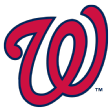
35. Carter Kieboom, INF, Washington Nationals
Age: 22 (9/3/97)
Bats: R | Throws: R
6-foot-2 | 190 pounds
Top level: MLB
Future value: 55
Kieboom is ready to be a full-time big leaguer now, and I think he'll be a strong regular, even if it's unclear what position he should play. He fits best at third base long-term, where his plus arm and plus raw power profile cleanly, but he's similarly suited to second base if that's what's needed, and he can fill in at shortstop at least part-time, but most scouts think his range isn't enough for him to play there primarily. Kieboom has figured out how to get some lift into his swing and get to his power in games while not completely neutering his natural hitting abilities. He projects as an above-average offensive force with real defensive value and should offer a reasonable version of that in 2020.

36. Brendan Rodgers, 2B, Colorado Rockies
Age: 23 (8/9/96)
Bats: R | Throws: R
6-foot-0 | 180 pounds
Top level: MLB
Future value: 55
Rodgers looked like the top prospect for the 2015 draft as a high school hitter with years of elite track record, then Alex Bregman, Dansby Swanson and Andrew Benintendi all made late charges to steal the prospect spotlight. Rodgers has steadily worked his way to the big leagues and stayed essentially the same player, with the only real revelations being that his pitch selection is below average and he probably fits a little better at second base (it was a toss-up between middle infield spots in 2015). He should produce above-average offense (after adjusting for Coors Field) and provide some defensive value starting this year.
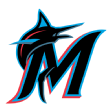
37. Jazz Chisholm, SS, Miami Marlins
Age: 22 (2/1/98)
Bats: L | Throws: R
5-foot-11 | 165 pounds
Top level: Double-A
Future value: 55
Chisholm was half of a rare prospect challenge trade with Arizona last year that sent Zac Gallen to the desert. The D-backs have to be happy with their return so far, and the Marlins might not have to wait long to see Chisholm in the big leagues. He's a common type of hitter in today's big leagues, and there are plenty of examples of them on this list: good pitch selection, big raw power, lofted swing path to get to all the raw power in games, with a worse-than-average contact rate due to these other choices.
The difference between Chisholm and most of the other players such as this is that Chisholm is an above-average defensive shortstop with above-average speed. There might be some lumps early in his big league career while he dials things in against the best pitchers in the world, but something like Didi Gregorius is a reasonable expectation.

38. Drew Waters, CF, Atlanta Braves
Age: 21 (12/30/98)
Bats: B | Throws: R
6-foot-2 | 183 pounds
Top level: Triple-A
Future value: 55
Waters is one of the more polarizing prospects on this list, due mostly to varying takes on his pitch selection and makeup. I was working with the Braves the year they drafted Waters and can see why his personality would be a question to outside observers. He's loud and can rub some people the wrong way, and this is especially likely when someone just watched him from the stands for a few games or spent a day or two around him in a clubhouse. Some teams were convinced Javier Baez and Bryce Harper were bad makeup guys in high school and early in their pro careers, and though all of these instances aren't the same, there's a bit of the same thing going on here.
Waters is definitely a hitter who likes to swing and is prone to chase, with bat control that has bailed him out until the upper levels of the minors. Sometimes this is Lewis Brinson, Josh Vitters, Delmon Young or Jeff Francoeur, and sometimes it's Starling Marte or even Ronald Acuna Jr. It's an issue with a number of players high on this list, including Luis Robert, CJ Abrams and Oneil Cruz. Pitch selection can be improved, but often not dramatically, and there are different flavors within that narrow definition. What it normally comes down to is makeup, which becomes a proxy for being able to make adjustments, and bat control, which is the ability to hit pitches that aren't center cut (think Vlad Guerrero Sr. or Ichiro as examples of 80 bat control). I think Waters is above average in both regards.
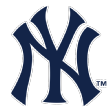
39. Jasson Dominguez, CF, New York Yankees
Age: 17.1 (2/7/03
Bats: B | Throws: R
5-foot-11 | 194 pounds
Top level: Amateur (Dominican Republic)
Future value: 55
Dominguez is the most celebrated and exciting international prospect in some time; some scouts say he's the best 16-year-old baseball player they've ever seen. Given the mechanics of the international signing process, only the Yankees have seen him play a lot of live games the past few years, but everyone who has seen him gives a similar report. One source described his frame and tools as "peak Yasiel Puig, except he's 15."
He has easy plus raw power from both sides of the plate that could grow to 70-grade pop on the 20-80 scouting scale at maturity, or 30 homers annually. Dominguez is a 70-grade runner with a 60-grade arm that can play almost any position on the field, but he will primarily play center field to simplify his path to the big leagues. There's easily plus bat speed and some feel for lifting the ball in-game, but exactly how good Dominguez's pitch selection and in-game hitting will be in the summer of 2020 are the unknowns at this point. He likely will debut in the rookie-level GCL and/or the Yankees Appalachian League Pulaski affiliate. Both Wander Franco and Vladimir Guerrero Jr. debuted in the Appy League at age 17, so a loud debut at that level would be the optimistic outcome here.

40. Vidal Brujan, 2B, Tampa Bay Rays
Age: 22 (2/9/98)
Bats: B | Throws: R
5-foot-9 | 155 pounds
Top level: Double-A
Future value: 55
Brujan is an elite athlete and elite in both a baseball sense and a football combine sense. He's a 70-grade runner with 50-grade raw power along with strong lateral movement and acceleration (think Tyreek Hill), but he also has the baseball instincts to let those tools play. Brujan is also next in line of the recent trend of smallish second basemen with great feel for the game and sneaky power, along with Ozzie Albies, Jose Altuve, Mookie Betts, Dustin Pedroia, etc.
Brujan has plus contact skills and plus defensive ability that would allow him to play anywhere on the field, but being a double-play partner for Wander Franco seems like his destiny. Brujan doesn't lift the ball much, and his raw pop doesn't really translate to games right now, so his impact might not come from that facet of his game in the short term.

41. Nolan Gorman, 3B, St. Louis Cardinals
Age: 19 (5/10/00)
Bats: L | Throws: R
6-foot-1 | 210 pounds
Top level: High-A
Future value: 55
Gorman has a long amateur track record of hitting against strong pitching, showing 70-grade raw power and getting to it with a swing suited for power. He looks like he'll hit around .250 with plenty of walks and power, and the main concern will be if he can keep his body and lateral quickness in check to stick at third base. He should be fine for now, but first base might be his destination in the back half of the six-to-seven years of team control.

42. Alec Bohm, 3B, Philadelphia Phillies
Age: 23 (8/3/96)
Bats: R | Throws: R
6-foot-5 | 240 pounds
Top level: Double-A
Future value: 55
Like Gorman, Bohm's biggest question surrounds his ability to stick long-term at the hot corner. Bohm is longer-limbed at 6-foot-5, and he isn't very quick-twitch in the lower half in the way of modern MLB third basemen. Because he's a well-below-average runner, his likely home is first base eventually, which would end up wasting his plus arm. Bohm has made some progress in pro ball, with positioning, footwork and first-step quickness. The easy positives here are Bohm's plus raw power and plus contact skills. When Bohm went as the No. 3 overall pick out of Wichita State in 2018, there was some question of whether the Phillies would put more lift and length in Bohm's swing and try to tap into all of his power. They mostly haven't and seem fine with continuing forward with a swing that's in the zone for a long time. Bohm's raw strength can create homers rather than trying to lean into lifting everything.

43. Ronny Mauricio, SS, New York Mets
Age: 18 (4/4/01)
Bats: B | Throws: R
6-foot-3 | 166 pounds
Top level: Low-A
Future value: 55
Mauricio is somewhat polarizing with scouts. He was one of the top prospects in his signing class, and the things that led to that -- an athletic, lanky frame that produces twitch and power -- are still present, but now there's some performance track record that causes other scouts to pause. He's a bit of a free swinger, and he isn't getting to enough of his raw power to justify his low walk rates. Pitch selection is one of those sticky skills that doesn't change much -- and usually does early in a career -- so the question with Mauricio is if we should trust our eyes or the performance. It's early enough that you have to lean to your eyes, but if 2020 is another year with a sub-5 percent walk rate and middling power, then it's OK to be concerned. That or he'll turn into Corey Seager or Carlos Correa this year, and I'll swear I never wrote this.

44. Grayson Rodriguez, RHP, Baltimore Orioles
Age: 20 (11/16/99)
Bats: L | Throws: R
6-foot-5 | 230 pounds
Top level: Low-A
Future value: 55
Rodriguez was someone I liked less than some comparable prep arms in the 2018 draft, such as Matthew Liberatore, Carter Stewart, Cole Winn, Cole Wilcox, Ryan Weathers, Mason Denaburg, Mike Vasil and Kumar Rocker. Rodriguez and Rocker (the top 2021 draft prospect, currently at Vanderbilt) are on similar footing now at the top of that group. The concerns with Rodriguez were due to his throwing two breaking balls that could run together at times, his having his velo spike in the spring against weak high school competition and his being a control (in the zone) over command (quality strikes) type of pitcher, due in part to his body composition and delivery. He has answered all of these questions in less than two years and has beaten all of the expectations, so he seems like a strong bet to continue doing such going forward. All four pitches he throws are above-average or plus, and his command has also progressed.

45. Deivi Garcia, RHP, New York Yankees
Age: 20 (5/19/99)
Bats: R | Throws: R
5-foot-10 | 163 pounds
Top level: Triple-A
Future value: 55
Garcia is a pitcher who is easy to love on paper, reading a TrackMan report, but takes a bit longer to fall in love with in person. He has a high-spin-rate curveball (2750 rpm on average) that he can locate well and draw whiffs with, he's up to 97 mph, his changeup also flashes above average at times, and there's plenty of strike-throwing with a lack of wasted pitches. In person, Garcia is listed at 5-foot-10 and 163 pounds, which looks about right, and he has some effort to a crossfire delivery. After a few innings, you can see that what he's doing is working, but scouts are trained to at least question these things. I think a role akin to that of Rich Hill or Lance McCullers Jr. might be the best fit -- a starter with rest built into his schedule or a reliever who can go multiples and spot-start -- as a way to find the most important 100 or so innings to use Garcia's playoff-caliber stuff rather than wasting it in less meaningful games.

46. Josiah Gray, RHP, Los Angeles Dodgers
Age: 22 (12/21/97)
Bats: R | Throws: R
6-foot-1 | 210 pounds
Top level: Double-A
Future value: 55
Gray was a late-charging prospect in the 2018 draft from LeMoyne, a Division II school in Syracuse. He was on follow lists for his athleticism, easy delivery and velocity as a shortstop who was new to pitching. The Reds took him in the second round, a bit earlier than some expected, and as he was starting to break out in pro ball, he was traded to the Dodgers with Jeter Downs in the Alex Wood/Yasiel Puig deal. The Dodgers picked well in that deal, and buzz is continuing to grow that Gray might be the best pitcher in the L.A. system. His fastball sits at 92-96 mph with rising life that works well up in the strike zone, paired with a two-plane slider that grades above-average to plus. Due to his athleticism, Gray projects for above-average command, so continuing to get high-level reps and fine-tuning his changeup are the only things left for Gray to work on before he sticks in a big league rotation.

47. Nick Madrigal, 2B, Chicago White Sox
Age: 22 (3/15/97)
Bats: R | Throws: R
5-foot-7 | 160 pounds
Top level: Triple-A
Future value: 50
Madrigal had some No. 1 overall pick buzz in his draft year -- before he suffered a broken wrist while at Oregon State. He seemed like a candidate to ride the wave of smallish second baseman with ordinary raw power who use athleticism and instincts to hit mistakes over the fence often enough to keep pitchers honest. Since signing, Madrigal has gone in the opposite direction, with top-of-the-scale contact rates and bottom-of-the-scale exit velocities. On the bright side, Madrigal is a plus defender with plus-plus speed, so power isn't essential for him to be a strong regular. On the negative side, his ceiling is basically 3 WAR if he has zero power. A likely 2020 debut and high likelihood of his being a 2-to-3-win player mean he belongs in my top 100; Madrigal's feel for the game and adjustments give me enough to bet on a solid outcome here.
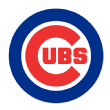
48. Nico Hoerner, 2B, Chicago Cubs
Age: 22 (5/13/97)
Bats: R | Throws: R
5-foot-11| 195 pounds
Top level: MLB
Future value: 50
Hoerner wasn't an exciting prospect coming out of Stanford, as a likely non-shortstop with plus speed and limited power. He still isn't much of an over-the-fence threat, and he's still more of a second baseman, but Hoerner is better than most scouts were expecting. His polish allowed him to get to the big leagues just over a year after he went 24th overall, he has improved his defense to be passable at second, short and center field, and, most importantly, he changed his swing enough to add more thump. Grinders who don't have a weakness, figure things out quickly and can play multiple positions are championship-type players, and that's what Hoerner is.

49. Ian Anderson, RHP, Atlanta Braves
Age: 21 (5/2/98)
Bats: R | Throws: R
6-foot-3 | 170 pounds
Top level: Triple-A
Future value: 50
Anderson's stuff has changed a bit since his high school days. His curveball was above average to plus at times when he was an amateur but has settled as an average pitch now. Anderson's changeup was a third pitch that wasn't used much and flashed potential -- even above average at times -- but is now consistently plus. The rest of the profile that led to Anderson going No. 3 overall in 2016 is essentially the same: a near ideal frame, arm action and delivery, throwing fastballs into the mid-90s that work best at the top of the strike zone, with above-average command projection.
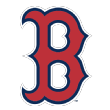
50. Jeter Downs, 2B, Boston Red Sox
Age: 21 (7/27/98)
Bats: R | Throws: R
5-foot-11 | 180 pounds
Top level: Double-A
Future value: 50
Downs was one of two headliners in the Mookie Betts deal, and he's named after Derek Jeter. That might be a tough sentence to read for Sox fans, but Downs had a breakout 2019 season that helped make him Boston's top prospect. He's a below-average runner who fits better at second base, maybe third base, more than shortstop, but he's passable at short as well. Downs has been an advanced hitter for years (he's still just 21), but in 2019, he finally tapped into his above-average raw power and did so while walking a bit more and with the same contact rate -- a trick the Dodgers' development staff has gotten very good at.

51. Riley Greene, RF, Detroit Tigers
Age: 19 (9/28/00)
Bats: L | Throws: L
6-foot-2 | 190 pounds
Top level: Low-A
Future value: 50
Greene was identified by scouts as early as his freshman year in high school at an Orlando-area powerhouse that produced Zach Eflin and Ryan Mountcastle in recent years. Greene looks to be the best of the bunch. On the showcase circuit, he was a prototypical right fielder with marginal speed and defense, enough arm for right and plus raw power to go with strong feel to hit.
In the spring, he came out of the chute a couple clicks faster, average or better, with enough instincts to allow him to play center field in pro ball after the Tigers took him No. 5 overall. The above-average contact skills and plus raw power are still present, and the early pro performance has been strong, so there's a chance that Greene is a quick mover with above-average offensive projection who has a nonzero chance to play center field.

52. Logan Gilbert, RHP, Seattle Mariners
Age: 22 (5/5/97)
Bats: R | Throws: R
6-foot-5 | 195 pounds
Top level: Double-A
Future value: 50
Gilbert popped up on the Cape as the next elite arm coming from Stetson (Corey Kluber, Jacob deGrom), but he took a step back a bit in his draft spring, as his velo was down amid big pitch counts. Seattle was among the clubs that thought a more regular pitching schedule would get his velocity up from 89-93 to 92-94, which would also help the crispness of his breaking ball. Seattle was right, and now Gilbert's plus command can lead to more swing-and-misses, with above-average stuff in a four-pitch mix coming from a durable frame and repeatable delivery.

53. Edward Cabrera, RHP, Miami Marlins
Age: 21 (4/13/98)
Bats: R | Throws: R
6-foot-4 | 175 pounds
Top level: Double-A
Future value: 50
Cabrera was identified in rookie ball as a popup arm with mid-90s velocity, but 2019 was his coming-out party, as he became a legit mid-rotation starting prospect. He's in the upper-90s in almost every start and gets more whiffs on his heater than Sixto Sanchez (No. 55 on this list and a Marlins teammate), with a more consistent breaking ball. There's still some refinement to be had with pitch execution, rather than relying on power, but Cabrera will be a useful big league pitcher of some stripe, possible as soon as late 2020.

54. Jhoan Duran, RHP, Minnesota Twins
Age: 22 (1/8/98)
Bats: R | Throws: R
6-foot-5 | 230 pounds
Top level: Double-A
Future value: 50
Duran was traded from the Diamondbacks to Minnesota in the Eduardo Escobar deal in 2018 as a raw, XL-sized kid with arm strength. The Twins have helped make him into a force who hits triple digits frequently, with an above average to plus slider and changeup. The maturity and command look to be in place for a ground-ball-focused rotation workhorse with swing-and-miss stuff.

55. Sixto Sanchez, RHP, Miami Marlins
Age: 21 (7/29/98)
Bats: R | Throws: R
6-foot-0 | 185 pounds
Top level: Double-A
Future value: 50
Sanchez is somewhat maddening for scouts. He'll show you everything you want to see: effortless triple-digit velocity, athleticism for above-average command, a strong frame for durability, a plus slider and a plus to plus-plus changeup. It's these traits that made him the headliner in the J.T. Realmuto trade, but it's the inconsistency that has kept him from fully breaking through.
There always seems to be something going wrong, whether it's in Sixto's control or not, ranging from neck, shoulder or elbow soreness (he hasn't had any surgeries) to showing up to camp a little overweight to trying to pitch through problems that seem to get worse. His electric fastball doesn't get the kind of whiffs that the velocity suggests, and his slider quality will wax and wane. There's still undeniable ace upside, which is something I can say of only about a dozen pitchers in the minors, but the roller coaster will test anyone's constitution.

56. JJ Bleday, RF, Miami Marlins
Age: 22 (11/10/97)
Bats: L | Throws: L
6-foot-3 | 205 pounds
Top level: High-A
Future value: 50
Bleday was a solid follow in high school in the Florida panhandle, a two-way type who was good both on the mound and at the plate, but without many pro-type tools to get excited about. He took a step forward early in his career at Vanderbilt, developing plus raw power and looking like a primary hitter. That led into his draft season, when he demolished the SEC en route to going fourth overall to the Marlins.
Bleday isn't a great athlete in the football sense of the word -- he wouldn't blow up the bench press or run a blazing 40 -- but he is in the baseball sense. He has strength and explosion in his hips, forearms and wrists and great feel for a first step in the outfield or the tiny movement in a swing that help make hard contact. He projects for above-average in contact, power and right-field defense and could move quickly.

57. Triston Casas, 1B, Boston Red Sox
Age: 20 (1/15/00)
Bats: L | Throws: R
6-foot-4 | 238 pounds
Top level: Double-A
Future value: 50
Casas was another prospect who was ID'd early in his prep career and was so advanced that he reclassified to the 2018 class and still went in the first round. He was a stone-cold first baseman as a teenager, which is usually a red flag for a prospect, as the best first basemen usually came from another position, like the best relievers were often starters. Casas is an exception in that he has massive plus-plus raw power that could produce 30 homers annually that he's starting to tap into in games, along with above-average feel for contact and pitch selection. He's better than average at first base and also has a plus arm that helped him get into the mid-90s on the mound in high school.

58. Trevor Larnach, RF, Minnesota Twins
Age: 23 (2/26/97)
Bats: L | Throws: R
6-foot-4 | 223 pounds
Top level: Double-A
Future value: 50
Larnach got scouts' attention in the beginning of his draft year at Oregon State by hitting balls out of Arizona spring training stadiums with speeds as high as 114 mph off the bat. The easy plus raw power is still the carrying tool here, as the speed and defense are just fine, but Larnach made progress in 2019 with his contact skills. He toned his swing down a bit and got better at picking pitches to drive, helping his walk rate along the way.
Larnach will play in the upper levels in 2020 and could have a big league look coming at the end of the year if the need arises. He's a slightly better bet in my book than Alex Kirilloff to be an above-average everyday player, but they're in roughly the same area.

59. Daniel Lynch, LHP, Kansas City Royals
Age: 23 (11/17/96)
Bats: L | Throws: L
6-foot-4 | 195 pounds
Top level: Double-A
Future value: 50
Lynch was a favorite of mine in the 2018 draft, due both to his late-rising velo, aggressive approach on the mound, and thumbing his nose at some of the more absurd demands made of him by Virginia's conservative coaching staff. His velo jumped again in pro ball and he's now into the upper-90s at times. His slider is above-average to plus and he mixes in a curveball, cutter and changeup that are all average to above. He should be in the upper levels in 2020 and there aren't many roadblocks other than service time manipulation keeping him from a late 2020 MLB debut.

60. Josh Lowe, CF, Tampa Bay Rays
Age: 22 (2/2/98)
Bats: L | Throws: R
6-foot-4 | 190 pounds
Top level: Double-A
Future value: 50
Lowe's older brother Nate is a first baseman that's already reached the big leagues with the Rays by figuring out ways to optimize his swing and approach. Josh did that in 2019, raising his average launch angle closer to what it was in high school when he was showing 65-grade raw power and hitting bombs regularly.
Lowe has a good sense of the strike zone, which helps him to draw walks and pick out drivable pitches. He's a plus runner with just OK instincts, but that's enough for now to stack in center field, where his plus arm can also help out. Lowe is a lower-contact rate type who will create everyday value with power, speed and defense.

61. Sean Murphy, C, Oakland Athletics
Age: 25 (10/10/94)
Bats: R | Throws: R
6-foot-3 | 215 pounds
Top level: MLB
Future value: 50
Murphy posts some big tools on the scouting card: a 70 arm, 60 raw power and a 55 hit tool and glove behind the plate. He's 25 and has had multiple surgeries on his hands along with a knee issues. His swing includes a small load, not creating the mechanical separation to get to his raw power in games. His bottom-of-the scale speed means ground balls are almost always out.
Automatic strike-calling might hurt him a good bit, and his 70 arm is used less with fewer stolen base attempts across the league. The rigors of playing catcher already make offensive tools play down some, but Murphy's are luckily loud enough that below those tools is still a solid everyday player who is big league ready.

62. Geraldo Perdomo, SS, Arizona Diamondbacks
Age: 20 (10/22/99)
Bats: B | Throws: R
6-foot-3 | 184 pounds
Top level: High-A
Future value: 50
Perdomo is one of my favorite prospects in the minors, with both elite pitch selection and bat control that inform a plus hit tool along with above-average speed and defense at shortstop. He's 20 now and should open in high-A but is a quick-moving type who will likely be a couple dozen spots higher on this list next year.
There's some raw power here, projection for more (he recently had a growth spurt) and he's still leaning to get to it in games; that would be the last element that Perdomo is missing.

63. Alex Kirilloff, 1B, Minnesota Twins
Age: 22 (11/9/97)
Bats: L | Throws: L
6-foot-2 | 210 pounds
Top level: Double-A
Future value: 50
Kirilloff stood out on the summer showcase circuit as a premium hitter with above-average power and limited defensive value, and that's why Minnesota took him in the middle of the first round in 2016. There are still the elements for an above-average to plus offensive contributor, though Kirilloff's pitch selection leaves a bit to be desired, while he's moving down the defensive spectrum to first base and his wrist has been giving him trouble.
The WAR upside here isn't enormous, but those with a long track record of hitting tend to keep hitting, so I'm staying on Kirilloff.

64. Evan White, 1B, Seattle Mariners
Age: 23 (4/26/99)
Bats: R | Throws: L
6-foot-3 | 205 pounds
Top level: Double-A
Future value: 50
White's value is already confirmed, at least to the Mariners, by his six-year, $24 million deal that could grow to $55.5 million with three additional club options. As a first baseman with no big league service time who doesn't have huge raw power, it's hard to commit long-term to White, but the price is low for his controlled years and there's an important but unusual separator present: White's defense.
First-base defenders usually blend into the background, but White is truly elite in a way that impacts the team. White has solid average offensive ability but gets the most out of that, with a high average exit velo supporting the notion that he makes hard contact consistently.

65. Miguel Amaya, C, Chicago Cubs
Age: 20 (3/9/99)
Bats: R | Throws: R
6-foot-1 | 185 pounds
Top level: High-A
Future value: 50
Amaya is in the risky prospect subset of young catchers but is one scouts feel good about because all the tools and soft skills appear to be present. The tools are here for an above-average defender with a plus arm, along with the adaptability and pitching-staff-leading qualities. He shows solid-average raw power, with solid pitch selection and contact skills. Anything close to league average offensive production as a catcher would make Amaya one of the top 12-15 catchers in the league.

66. Mitch Keller, RHP, Pittsburgh Pirates
Age: 23 (4/4/96)
Bats: R | Throws: R
6-foot-3 | 195 pounds
Top level: MLB
Future value: 50
Keller will soon be 24 and hasn't quite had the big league breakout some were predicting years ago. He's still up to 98 mph with his sinker and his slider and curveball are both above-average, to go with a strong frame/delivery/command profile.
HIs changeup and overall execution still leaves a bit to be desired, but execs I spoke with are now expecting more of a contact-based reliable starter than the potential front-line type that some saw coming years ago.

67. Brent Honeywell Jr., RHP, Tampa Bay Rays
Age: 24 (3/31/95)
Bats: R | Throws: R
6-foot-2 | 180 pounds
Top level: Triple-A
Future value: 50
Honeywell was one of the top pitching prospects in baseball a few years ago, but he had Tommy John surgery just before he was set to make his MLB debut, followed by a nerve issues and broken bone in his elbow. There has been no indication that his stuff will be any different, but you never really know how someone will bounce back from that kind of layoff until they do.
At his best, Honeywell had five pitches and command that graded above-average, headlined by a plus-plus screwball that paired well with his unique, outspoken demeanor.

68. Jordan Groshans, 3B, Toronto Blue Jays
Age: 20 (11/10/99)
Bats: R | Throws: R
6-foot-4 | 190 pounds
Top level: Low-A
Future value: 50
Groshans flashed a Josh Donaldson starter kit throughout the last year of his high school career, raising the concerns that Donaldson had early in his swing metamorphosis: that the contact rate might slip a bit with all the pre-pitch movement. It's been toned down a bit, but Groshans still has plus power projection, solid speed, athleticism, defense and plus arm strength to project as a strong everyday player.
His 2019 was limited by a foot injury, so his early 2020 will tell us a lot about how much that might limit him, since his skills, tools and performance are all up to snuff.

69. Travis Swaggerty, CF, Pittsburgh Pirates
Age: 22 (8/19/97)
Bats: L | Throws: L
5-foot-11 | 180 pounds
Top level: High-A
Future value: 50
Swaggerty had an unusual profile as a small-school (South Alabama) product who stood out on the power program-heavy collegiate Team USA the summer before he was drafted No. 10 overall by Pittsburgh.
That summer, Swaggerty showed contact skills, plus speed, above-average defensive ability and a plus arm. In his draft spring, Swaggerty's swing got a little bigger and louder while he also got stronger. He was flashing plus raw power in batting practice, which changed his profile a bit, and timing issues impacted his contact ability. He's been walking that line in pro ball, with about average contact rates, but hasn't yet fully tapped into his raw power.
Regardless, a solid offensive contributor with his speed and defense will slot in an everyday spot even without much improvement.

70. Simeon Woods Richardson, RHP, Toronto Blue Jays
Age: 19 (9/27/00)
Bats: R | Throws: R
6-foot-3 | 200 pounds
Top level: High-A
Future value: 50
Woods Richardson was an underrated prep prospect in part because he had a maxed-out frame and didn't flash a plus pitch leading up to the draft. The Mets popped him 48th overall, he had a loud pro debut summer that had clubs reevaluating him, then he broke out in 2019. The Mets traded him to Toronto in the Marcus Stroman deal toward the end of that year.
Some execs see No. 2 starter potential here, with a four-seamer that grades out well above its 92-94 mph velocity due to the bat-missing characteristics. One of Woods Richardson's strengths as an amateur was three pitches that flashed above-average as well as athleticism that led to strong command, helping to round out the profile of a rising prospect.

71. Xavier Edwards, 2B, Tampa Bay Rays
Age: 20 (8/9/99)
Bats: S | Throws: R
5-foot-9 | 160 pounds
Top level: High-A
Future value: 50
Edwards is a stone-cold 80 runner and he has plus contact skills to go with the ability to passably play any position on the field. His arm is a little weak for a regular shortstop fit, but the hands are strong. His raw power is fine for not getting the bat knocked out of his hands or hitting a mistake in the gaps, but it's lacking in terms of over-the-fence impact.
He likely gets to Double-A this year as a 20-year-old and projects as a valuable, versatile player used similarly to Ben Zobrist or Marwin Gonzalez, but with a different skill set.

72. Alek Thomas, CF, Arizona Diamondbacks
Age: 19 (4/28/00)
Bats: L | Throws: L
5-foot-11 | 175 pounds
Top level: Double-A
Future value: 50
Thomas was one of a couple of Northern-based prep bats who faced just OK competition in the spring but were stalwarts at summer events, particularly Team USA ones, for multiple summers in front of scouts, playing with players older than them. Jarred Kelenic was another such prospect; Thomas is a notch lower than him in terms of tools but gets every drop out of them. He's a plus hitter with average raw power (which has been growing thanks in part to his father, the White Sox strength and conditioning coordinator) that he should get to in games. Thomas' plus speed and instincts allow him to project as an above-average defender in center field.

73. Brennen Davis, CF, Chicago Cubs
Age: 20 (11/2/99)
Bats: R | Throws: R
6-foot-4 | 175 pounds
Top level: Low-A
Future value: 50
Davis' father is former basketball great Reggie Theus, and Davis excelled on the hardwood all through high school as well. He was seen as a high-upside, high-risk prospect that might take a little while due to a lack of polish and high-end reps. It came together much quicker than outside observers expected, with a very loud 2019 in low-A (shortened by injury to just 50 games) that now has Davis on a different trajectory.
He projects for plus raw power, has plus speed, will be at least above-average in center field and has a plus arm. The contact skills are now at least average, and scouts rave about his makeup.

74. Heliot Ramos, RF, San Francisco Giants
Age: 20 (9/7/99)
Bats: R | Throws: R
6-foot-2 | 200 pounds
Top level: Double-A
Future value: 50
Ramos was a draft model-friendly 17-year-old on his 2017 draft day, not turning 18 until September. He was rising late in the process and went 19th overall to San Francisco and has had a slow rise in the minors as the draft model research would suggest. Ramos has a mess of above-average tools in his raw power, speed and arm strength and they're undermined a bit by an aggressive approach at the plate, but he improved that in 2019. He's gaining power and losing a step, likely fitting in right field now, but there's plenty here to profile as an everyday player, likely in 2021.

75. Taylor Trammell, LF, San Diego Padres
Age: 22 (9/13/97)
Bats: L | Throws: L
6-foot-2 | 195 pounds
Top level: Double-A
Future value: 50
Trammell was traded from the Reds to the Padres in the Trevor Bauer-Yasiel Puig three-team 2019 deadline deal. Trammell was a late-rising draft prospect who was also a notable football star and rose up the board in the spring as everything clicked. He's similar to Carl Crawford in that he's a super-athletic, multisport standout plus-plus runner with a weak arm that fits best as an elite left fielder. He's different than Crawford in that Trammell draws a lot of walks. There are dynamic tools here that haven't quite been fully unleashed, but Trammell is likely to be at least a solid everyday outfielder, perhaps as soon as late 2020.

76. Jordyn Adams, CF, Los Angeles Angels
Age: 20 (10/18/99)
Bats: R | Throws: R
6-foot-2 | 180 pounds
Top level: High-A
Future value: 50
Adams emerged at the NHSI tournament in March of his draft year. He was seen as a multisport standout with a North Carolina commit as a wide receiver who would probably go that route until he showed Byron Buxton-level tools at an event with multiple scouts from all 30 teams in attendance. Adams is an 80 runner who projects for above-average to plus power and defense in center field thanks to his top-of-the-scale athleticism. His swing and mannerisms are reminiscent of Buxton and some scouts wonder if he would've gone at the top of the draft if he had multiple years of top-level amateur experience like Buxton did. The Angels have been aggressive and Adams has performed so far, so it's hard to know what the ceiling here really is.

77. Keibert Ruiz, C, Los Angeles Dodgers
Age: 21(7/20/98)
Bats: B | Throws: R
6-foot-0 | 200 pounds
Top level: Triple-A
Future value: 50
Ruiz is the example execs give when asked about which sort of player will be harmed the most by automatic strike zones. He's excellent at stealing strikes, but is otherwise just fine at the other parts of catching. He'll need the offense to pick up some of that slack, but Ruiz's best skill is making contact and he's taken a deep dive in that end of the pool, at the expense of tapping into his average raw power. He's a performer at an elite position who is just 21 years old in Triple-A and on the verge of breaking into the big leagues: There's a lot to like here. There's still a short path to being one of the top 30 catchers in the world as an average defender with elite contact rates, but some wonder if there will be much impact.
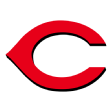
78. Tyler Stephenson, C, Cincinnati Reds
Age: 23 (8/16/96)
Bats: R | Throws: R
6-foot-4 | 210 pounds
Top level: Double-A
Future value: 50
Stephenson had some of the biggest tools among prep catchers in recent memory, with plus-plus raw power and arm strength to go with surprisingly good contact and catching skills for a 6-foot-4 backstop, tied mainly to his athleticism. These tools are still present and Stephenson has generally performed well and stayed healthy, but he hasn't quite put it all together yet. He has a more contact-focused approach than you'd expect, which is fine given the sorry state of the offensive side of MLB catching, though you wonder if there's a lower-average version who might hit 30 homers. Automatic strike zones will likely help him a bit given his size and how that normally affects framing.

79. Tarik Skubal, LHP, Detroit Tigers
Age: 23 (11/20/96)
Bats: L | Throws: L
6-foot-3 | 215 pounds
Top level: Double-A
Future value: 50
Skubal was a known amateur prospect who popped up at Seattle University, but he then fell off the radar a bit after Tommy John surgery and an uneven draft year with command issues. The Tigers scooped him up in the ninth round and he had a strong pro debut, finishing with a few outings in low-A. In 2019, Skubal exploded, going from low-A to Double-A and carving the competition with a fastball-heavy approach. He has good feel to spot a rising four-seamer up in the zone to get whiffs, and has a slider and changeup that are both average to a hair above along with a usable curveball as a fourth pitch. Skubal throws his fastball over two-thirds of the time and he doesn't have a plus secondary pitch, so I'm a little worried how this will play out when he's forced to change how he pitches at the upper levels, but there are also lots of elements here for a dependable starter in the big leagues.

80. Corbin Carroll, CF, Arizona Diamondbacks
Age: 19 (8/21/00)
Bats: L | Throws: L
5-foot-10 | 165 pounds
Top level: Short-season A-ball
Future value: 50
Carroll entered the 2019 draft as a somewhat limited player with plus-plus speed and contact skills in a center field profile, which helped keep him out of the top 10 picks. He had an impressive debut, demonstrating a strong feel for the strike zone and surprising power, as evidenced by his exit velocities, which were a couple of notches higher than expected. He's not that big and doesn't lift the ball much currently, but there are all kinds of important pieces present.

81. George Valera, RF, Cleveland Indians
Age: 19 (11/13/00)
Bats: L | Throws: L
6-foot-0 | 190 pounds
Top level: Low-A
Future value: 50
Valera had the prettiest swing in his July 2 class, and his feel for hitting continues to stand out. He projects for plus power and has feel to get to his pop in games with some contact traded off for that thump. Valera also has sneaky defensive ability and is passable in center field, but he will likely end up sliding over to right field in the long term.

82. Clarke Schmidt, RHP, New York Yankees
Age: 25 (2/20/96)
Bats: R | Throws: R
6-foot-1 | 205 pounds
Top level: Double-A
Future value: 50
Schmidt had Tommy John surgery in his draft spring just as he was breaking out for South Carolina. The Yankees took him in the first round for an under-slot bonus and he returned to the mound late in the 2018 season. 2019 was a strong first full season back on the mound and Schmidt is making waves in spring training with dominating performances in big league games. He has above-average to plus stuff across the board and the whiff-drawing fastball characteristics you come to expect from Yankees prospects. He's already 24, so with the Yankees' pitching injuries, only an innings limit could stand in the way of an extended big league look in 2020.

83. Shea Langeliers, C, Atlanta Braves
Age: 22 (11/18/97)
Bats: R | Throws: R
6-foot | 190 pounds
Top level: Low-A
Future value: 50
Langeliers bounced back quickly from a broken hamate bone during his draft spring and already appears to have added more power to his game. There was no question at draft time about his above-average defense and plus arm, along with above-average raw power and some feel for contact at the plate, but the overall offensive package was still just solid. I heard about some offseason swing adjustments that were adding raw power, and a source mentioned that Langeliers' spring training exit velocity so far has been much better than it was in 2019.

84. Liover Peguero, SS, Pittsburgh Pirates
Age: 19 (12/31/00)
Bats: R | Throws: R
6-foot-1 | 160 pounds
Top level: Short-season A-ball
Future value: 50
Peguero was the headliner in the Starling Marte trade with the Diamondbacks but was also expendable because Arizona rightly prefers another lower-level shortstop in their system in Geraldo Perdomo, who is 62nd on this list. Peguero has above-average contact skills and above-average running, fielding and throwing tools. He's well-rounded with a solid approach and enough raw power to eventually grow into double-digit homers and punish mistake pitches. The main worry is he's still a teenager and hasn't played in a full-season league yet, but he's about as accomplished of a prospect as you'll find at this level who wasn't a top pick or international signing.

85. Jose Garcia, SS, Cincinnati Reds
Age: 21 (4/5/98)
Bats: R | Throws: R
6-foot-2 | 175 pounds
Top level: High-A
Future value: 50
Garcia is a Cuban defector who signed for a $5 million bonus just before the hard-capped international bonus came into effect, and he was a teenager with the loud tools to support it. He's a plus runner who projects for plus power and has a plus glove to go with a plus arm. At 6-foot-2 175 pounds, he looks the part and offers all kinds of upside, but his performance in 2018 was held back due to a long layoff from games and being dropped in Dayton in April, while his 2019 in Daytona was up to expectations. The contact rate will always be average to below, but the power, speed, and defense will be enough for Garcia to profile as an everyday player; maybe as a Trevor Story type in an ideal world.

86. Alexander Vargas, SS, New York Yankees
Age: 18 (10/29/01)
Bats: B | Throws: R
6-foot-0 | 150 pounds
Top level: Rookie
Future value: 50
Vargas is one of many hot names out of the Yankees international program. Jasson Dominguez gets most of the headlines and Deivi Garcia is the closest to the big leagues, but Vargas was the player who most quickly turned a big signing bonus ($2.5 million) into stateside production and whose name came up multiple times in trade talks. Vargas has a chance for four plus tools, with power the one lagging behind. He was under 150 pounds when he signed but has added bulk, and his current power won't keep him from making contact.

87. Francisco Alvarez, C, New York Mets
Age: 18 (11/19/01)
Bats: R | Throws: R
5-foot-11 | 220 pounds
Top level: Rookie
Future value: 50
Alvarez got one of the top bonuses ($2.7 million) in the 2018 international signing class and has hit the ground running in pro ball. He got to the Appy League in his pro debut season and only played 42 games but all the elements are there. The body composition has improved, the catching has taken some steps forward, and his raw hitting tools are playing well in games already. This is somewhat a speculative ranking since young catchers are a risky subset of prospects, but Alvarez has not produced any negative information over the time he's been in the pro spotlight, so it's easy to be optimistic right now but he stacks up well to the top of his age peer group, the domestic high school seniors.

88. Shane McClanahan, LHP, Tampa Bay Rays
Age: 22 (4/28/97)
Bats: L | Throws: L
6-foot-1 | 173 pounds
Top level: Double-A
Future value: 50
McClanahan has taken a circuitous path from high school pitcher with a fastball in the mid-80s to a velo spike, Tommy John surgery, then an up-and-down draft year when he looked likely to go in the top five picks but ended up at the end of the round. McClanahan had a breakthrough 2019 showing the best version of his stuff (mid-90s fastball that's up to 99, easy plus curveball, usable changeup) and with more mechanical consistency and strike-throwing. One source said McClanahan might throw too many strikes, and his next step needs to be working at spots within the zone. Even if he can't do that, a power lefty who fits at the end of games has plenty of value.

89. Hunter Greene, RHP, Cincinnati Reds
Age: 20 (8/6/99)
Bats: R | Throws: R
6-foot-4 | 197 pounds
Top level: IL (Low-A in 2018)
Future value: 50
Greene was one of the most heralded prep pitchers of all time, hitting triple digits and doing it with almost no effort en route to going second overall to Cincinnati. He was a real prospect as a shortstop and has a near-ideal body, arm action and delivery, but has had trouble finding a consistent breaking ball and is now coming back from Tommy John surgery. There isn't really a reason other than Greene's arm speed to point to for the injury and he still sits in the upper 90s, hitting triple digits in most starts. The strike throwing is already good and the slider and changeup will probably both settle as average to above, but not swing-and-miss-pitches on their own.

90. Nick Lodolo, LHP, Cincinnati Reds
Age: 22 (2/5/98)
Bats: L | Throws: L
6-foot-6 | 195 pounds
Top level: Low-A
Future value: 50
Lodolo was a first-round pick out of high school, then was a top-10 pick coming out of TCU last summer. He'll flash three plus pitches at times, he's big at 6-foot-6, and he's a good athlete who projects for at least average command of his pitches. There's still more inconsistency than many would like, but even the slightly diminished version of Lodolo with no plus tool grades (yet) belongs on this list.

91.Tyler Freeman, SS, Cleveland Indians
Age: 20 (5/21/99)
Bats: R | Throws: R
6-foot | 170 pounds
Top level: High-A
Future value: 50
Freeman has two carrying skills: elite bat-to-ball ability and he can play shortstop. His arm might force a move to second base, but his instincts will delay that possibility. Freeman isn't big, doesn't have much power and is about an average runner. Cleveland has a track record of figuring out this sort of profile (Jose Ramirez was once something like this) and some former Cleveland execs now in Minnesota are also succeeding with prospects like Luis Arraez and Willians Astudillo, so this is another case of just trusting an unsexy sort of player that I can tend to underrate until it's too late.

92. Brusdar Graterol, RHP, Los Angeles Dodgers
Age: 21 (8/26/98)
Bats: R | Throws: R
6-foot-1 | 265 pounds
Top level: MLB
Future value: 50
Graterol is famous for being the pitcher whose medicals held up the Mookie Betts trade for what seemed like weeks. One way to look at it is that Graterol is good enough that if his medicals aren't what you thought they'd be, you want to take a step back. He has an unquestioned 80 fastball on the 20-80 scouting scale thrown with velocity that sits in the upper 90s and has been as high as 102 mph. His slider is a 55- or 60-grade pitch and his command might be enough to start, but it's legit closer stuff (with an idea of where it's going) if the command doesn't come along more. The Dodgers might prefer him as a late-game option anyway.

93. Jordan Balazovic, RHP, Minnesota Twins
Age: 21 (9/17/98)
Bats: R | Throws: R
6-foot-4 | 215 pounds
Top level: High-A
Future value: 50
As a later-blooming Canadian high school draftee, Balazovic isn't the classic strong-pedigreed pitcher you see on this list. He also doesn't have a bunch of plus pitches that he's learning to harness, rather a number of above-average offerings that he already has a good feel for mixing. His fastball velocity sits at 91-94 and touches 96 mph with good characteristics to draw whiffs, complemented by a slider and curveball that are both weapons, and by his solid command. His changeup is a fourth pitch, but often pitchers with strong command can make two breaking balls serve the function that a changeup normally does for starters.

94. Jonathan India, 3B, Cincinnati Reds
Age: 23
Bats: R | Throws: R
6-foot-0 | 200 pounds
Top level: Double-A
Future value: 50
India was a well-known prep player who had a high enough signability number to get him to Florida for college ball. He performed a bit below for expectations there until a breakout junior year that led to the Reds taking him fifth overall. In-game, India has mostly a bag of 50- and 55-grade tools, but with a track record and experience at the upper levels, that's a likely strong everyday player, and there just aren't that many of those in the minor leagues.

95. Luis Garcia, 2B, Washington Nationals
Age: 19 (5/16/00)
Bats: L | Throws: R
6-foot-0 | 180 pounds
Top level: Double-A
Future value: 50
Garcia is tough to peg by a stat line, because he was a teenager who got to Double-A last year. The tools are obvious, with above-average raw power and plus contact skills from a hitter at a middle-infield position. He got a seven-figure bonus as an amateur and scouts are now wary of betting against the Nationals when the club thinks it has another elite hitting prospect.
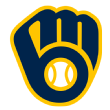
96. Brice Turang, SS, Milwaukee Brewers
Age: 20 (11/21/99)
Bats: L | Throws: R
6-foot-1 | 170 pounds
Top level: High-A
Future value: 50
Turang had been a potential 1-1 talent for the draft since he was a sophomore in high school, so going in the middle of the first round was a bit of a letdown. The game comes easy to him and that reads as disinterested to some, but it is common of the children of former big leaguers (Brian Turang is his father). There are some similarities to Stephen Drew, as a tooled-up shortstop with a quieter demeanor and secondary skills.

97. Ivan Herrera, C, St. Louis Cardinals
Age: 19 (6/1/00)
Bats: R | Throws: R
6-foot | 180 pounds
Top level: High-A
Future value: 50
Herrera performed well as a teenage catcher in low-A and also posted shockingly high exit velocities, both for his age and what scouts thought he could do. He has contact skills and plenty of ability to stick behind the plate long term, so while we aren't sure exactly how this plays out, there are a lot of positive elements to work with.

98. Braden Shewmake, SS, Atlanta Braves
Age: 22 (11/19/97)
Bats: L | Throws: R
6-foot-4 | 180 pounds
Top level: Double-A
Future value: 50
Shewmake was a somewhat boring 2019 draft prospect at first glance, as a lanky infielder who made lots of contact but without much pop or lift and didn't seem to have enough range to stay at shortstop. Some teams, including the Braves, looked deeper and saw a deceptively rangy shortstop with at least above-average speed and latent power that might be unlocked soon. Shewmake had a very loud debut and might be another large-framed everyday MLB shortstop in short order, though he won't have the power of Seager or Correa.

99. Andres Gimenez, SS, New York Mets
Age: 21
Bats: L | Throws: R
5-foot-11 | 165 pounds
Top level: Double-A
Future value: 50
Gimenez was a high-profile amateur out of Venezuela and fits the common mold of shortstops from that country: lots of feel for the game, contact skills and defensive chops. You could argue he doesn't have a plus tool, but they all flash above-average on a regular basis -- other than his power -- and the instincts help the whole profile.

100. Jose Urquidy, RHP, Houston Astros
Age: 24 (5/1/95)
Bats: R | Throws: R
6-foot | 190 pounds
Top level: MLB
Future value: 50
Urquidy took a circuitous path to prospectdom and really only had prospect value for the first time in 2019. He parlayed a breakout year into seven big league starts plus 10 strong innings in the MLB playoffs, buoyed by a fastball he dialed up to 97 mph and was complemented by a plus changeup and above-average command. He's a strong candidate to put up a few more 2+ win seasons (via WAR) starting in 2020, and there are plenty of guys on this list who won't put up 5 career WAR.
